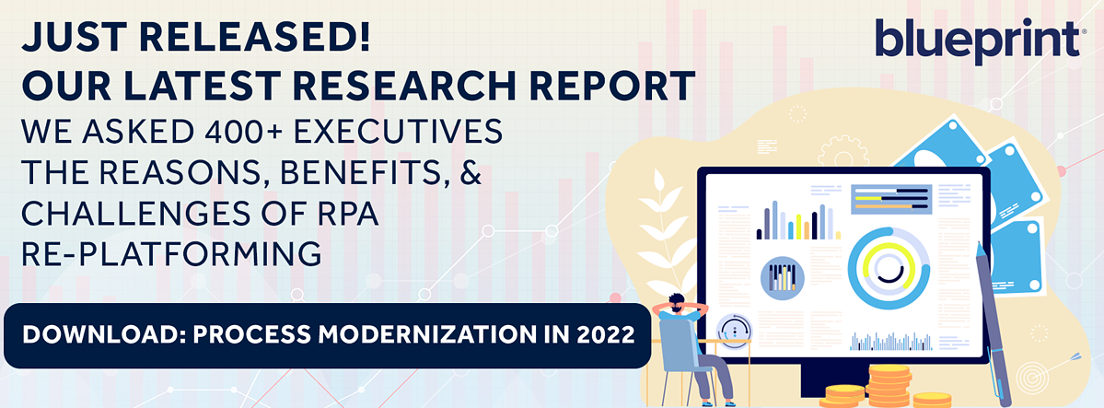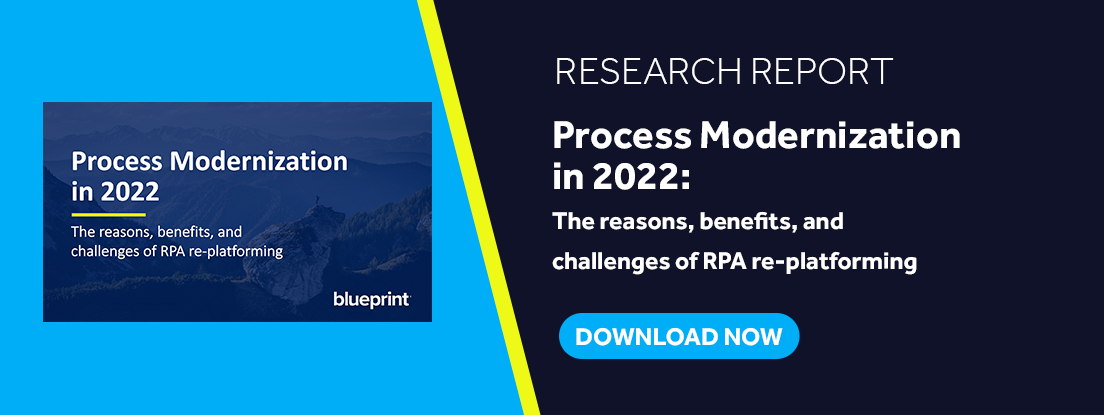How Organizations Are Re-Platforming Their Automation Estates to New RPA Tools
There are many reasons organizations are looking to new-generation automation platforms to re-platform their automation estates.
According to a recent report Blueprint published on the state of Process Modernization in 2022, organizations cited a desire to leverage better capabilities and features, reduce complexity and make automation more accessible to all users, and consolidate automation design and delivery into one tool as the main reasons for re-platforming.
When Blueprint surveyed 400 Executives, Directors, Department Heads, Senior Managers, and Analysts from the United States, the United Kingdom, Canada, France, and Germany, we wanted to understand two key things:
- how organizations had already re-platformed their automation estates
- how those that were considering switching automation tools planned to do so
Specifically, we wanted to uncover if they redeployed their automation estates themselves or looked elsewhere for help.
Here’s what we found.
Organizations that have already re-platformed used a third-party solution or vendor
According to Blueprint’s recent report on automation re-platforming, organizations that had already completed their switch re-platformed an average of 120 automations onto a new destination platform.
To do so, the vast majority procured a re-platforming solution from a third-party vendor to facilitate their switch. That wasn’t a surprise.
Traditionally, re-platforming automations has been challenging, time-consuming, and expensive because the leading automation platforms build and specify process automations differently. For one automation to work in another RPA platform, that automated process needed to be analyzed and understood. A highly skilled technical resource had to review the automation in the origin platform, understand what it did, rebuild it so that it would work in the destination tool, and finally test and redeploy it.
With that in mind, it’s no wonder that an overwhelming 61% of organizations that have already switched automation tools elected to do so with a re-platforming solution or with the help of a third party like a global services integrator. In comparison, less than half (37%) chose to complete the switch with internal resources.
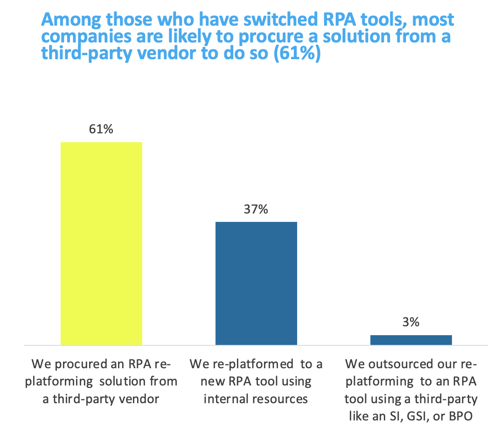
It’s also worthy of noting that according to Blueprint’s findings, the companies that elected to re-platform with internal resources were smaller businesses with fewer employees, suggesting that their automation estates would logically be of a smaller size when compared to much larger organizations.
The trend to seek external help was not exactly mirrored for the organizations considering re-platforming their automation estates to a new RPA tool.
Organizations considering re-platforming, plan to do so using internal resources
When asking the organizations currently considering re-platforming how they planned to redeploy their automation estates, the results Blueprint uncovered in the Process Modernization in 2022 report were radically different from those that had already switched. In fact, they were inverted.
The vast majority of organizations considering switching to another automation platform (63% to be exact) plan to redeploy their automated processes using internal resources.
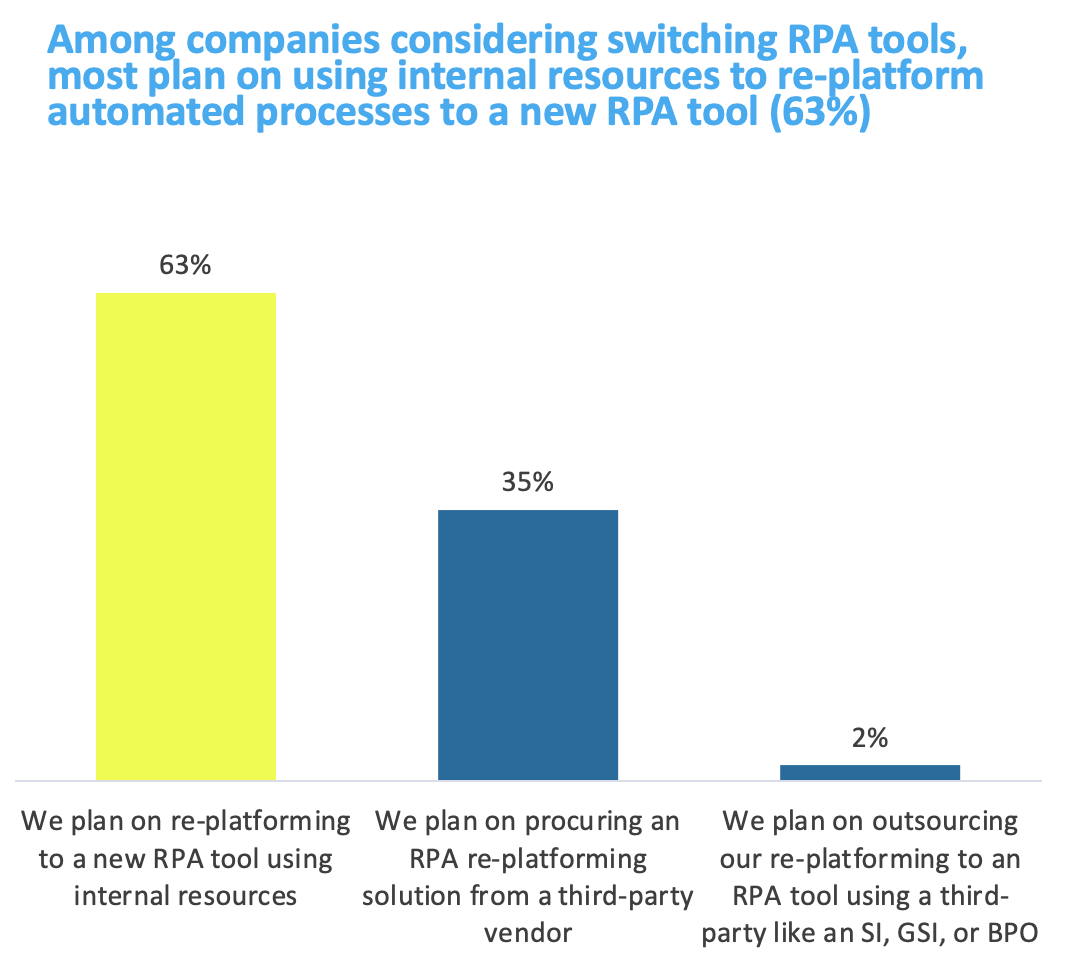
While interesting, this finding isn’t entirely surprising. Many organizations underestimate the cost, effort, and projected timeline of re-platforming an automation estate to a new RPA tool.
The plan to re-platform automated processes is even more intriguing, considering that organizations in the process of switching automation tools fully understand that automations need to be rebuilt and that they’ll need specialized resources to do all that heavy lifting. They reported as much when asked what they expected to be their most significant challenges when they began to re-platform their automations.
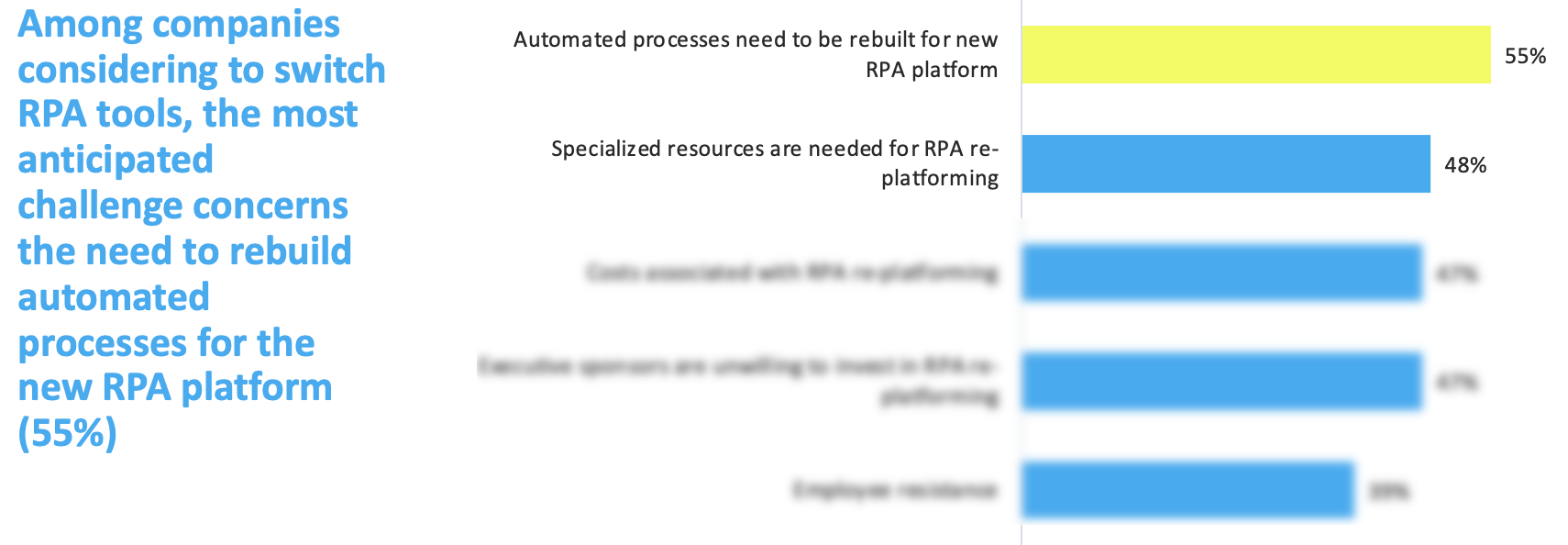
Speculation and logic suggest that once these organizations start their re-platforming journey, their anticipated challenges may become such a burden that external help is sought out.
This has not been uncommon with several of Blueprint’s customers who have attempted switching automation platforms independently. They quickly discover how complicated and labor-intensive the process can be, so they turn to Blueprint which does all the heavy lifting for them and helps them redeploy their automations estates while improving them in the process 3x faster and at a quarter of the cost of doing it manually.
Visit www.blueprintsys.com/replatforming to learn more about Blueprint’s re-platforming solution but don’t miss out on this opportunity for all the rich insight Blueprint’s Process Modernization in 2022 report offers like:
- How long organizations take to re-platform
- How much money they’re typically spending to redeploy their automations
- The benefits they’re experiencing after re-platforming
- And so much more!
Click the link below to download your free copy of the report now!
Share this
Recent Stories

4 Process Improvement Strategies: Modernize, Optimize, Standardize, Automate

3 Reasons Why It’s Important to Assess Your Automation Estate Before Re-platforming


